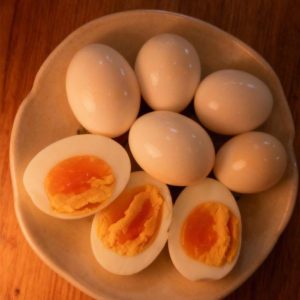Keeping household appliances clean and well-maintained is crucial for their longevity and performance. One appliance often overlooked is the steam iron, which can accumulate mineral deposits, starch, and fabric softener residue over time, affecting its ability to function smoothly.
Fortunately, you can clean your steam iron using natural ingredients like lemon, baking soda, and vinegar. However, to avoid damaging the iron, it’s important to follow safe methods and avoid common mistakes. Let’s explore how to clean your steam iron safely and effectively.

Supplies Needed:
- Lemon Juice: Natural acid helps dissolve light mineral deposits.
- Baking Soda: A gentle abrasive that cleans without scratching.
- White Vinegar: Helps break down tough grime and limescale (should be used carefully).
- Soft Cloth or Sponge
- Water
Step-by-Step Cleaning Process:
1. Prepare a Lemon and Baking Soda Paste for Surface Cleaning:
- Mix a small amount of lemon juice with baking soda to create a paste.
- Apply the paste to the cool, unplugged iron’s soleplate, focusing on areas with stains or residue (avoid the steam holes).
- Gently scrub the surface with a soft cloth or sponge, using circular motions. Baking soda will act as a mild abrasive to remove stains without scratching the surface.
- After scrubbing, wipe off the paste with a clean, damp cloth.
2. Use Vinegar Carefully for Limescale Removal (External Use Only):
- Vinegar is known for dissolving limescale, but it can damage certain parts of the iron if used improperly. Instead of soaking the entire soleplate or using vinegar inside the water reservoir, it’s safer to clean the external steam holes with a vinegar-soaked cotton swab.
- Dip a cotton swab in a mixture of equal parts white vinegar and water and gently clean around the steam holes to remove any mineral buildup.
- Be careful not to let vinegar enter the iron’s interior.
3. Rinse and Wipe the Soleplate:
- Once you’ve cleaned the soleplate, use a clean, damp cloth to wipe away any remaining residue from the baking soda paste or vinegar.
- Make sure the soleplate is thoroughly dry before using the iron again.
4. Avoid Using Vinegar in the Water Reservoir:
- While some suggest using vinegar and water inside the iron to clean the steam vents, most manufacturers advise against this, as vinegar can corrode internal components over time. Instead, always use distilled water for ironing to prevent mineral deposits.
5. Preventative Maintenance:
- Regularly clean your steam iron to prevent buildup. Wipe the soleplate after every few uses and empty the water reservoir after each use to avoid stagnant water and mineral accumulation.
- Always use distilled or demineralized water in the steam iron, as tap water can contribute to mineral buildup.
Conclusion:
Maintaining a clean steam iron is essential for smooth and efficient ironing. By using natural cleaning ingredients like lemon, baking soda, and vinegar correctly, you can safely remove mineral deposits and residue from the soleplate. Remember, avoid soaking the iron’s soleplate in vinegar for extended periods and refrain from using vinegar in the water reservoir to prevent damage to internal parts.
For long-term care, regular cleaning and using distilled water will keep your steam iron functioning well and help prevent common problems like limescale buildup. With these simple steps, you can prolong the life of your steam iron and enjoy effortless, wrinkle-free clothes every time.




